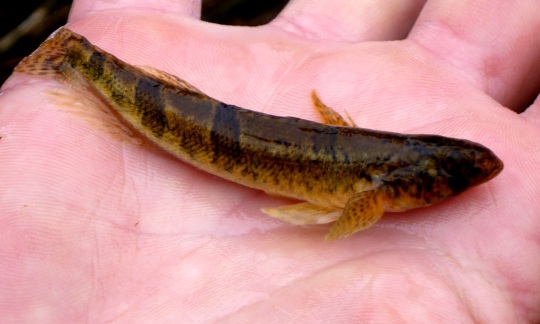The U.S. Fish and Wildlife Service this week removed the snail darter from the endangered species list because the fish has recovered. Thanks to collaborative conservation efforts since it was protected in 1975, says USFWS, the little fish is no longer in danger of extinction.
The 3-inch fish — named after tiny river snails, its primary food source — gained fame in the 1978 U.S. Supreme Court case of Tennessee Valley Authority vs. Hill. The court upheld the newly passed Endangered Species Act at the request of conservationists, farmers, and the Cherokee Tribe, who sought to protect the fish and its free-flowing habitat in the Little Tennessee River from construction of the controversial Tellico Dam.
The dam was halted for two years, but political forces in Congress subsequently exempted it from compliance with the conservation law by attaching a rider to an appropriations bill.
Biologists then developed a transplant program to establish new populations of the darter. Pushed by the Act’s protections, TVA changed dam operations to increase oxygen and provide pulsing flows to reduce sediment in spawning areas below dams. The Clean Water Act’s major reductions in pollution also contributed to the fish’s recovery. Populations of the darter now swim in several waterways in Tennessee, Alabama, Georgia and Mississippi.
“The recovery of the snail darter shows the success of the Endangered Species Act and the Clean Water Act,” said Jim Williams, the former Fish and Wildlife Service biologist who wrote the original rule protecting the snail darter. “With better management of water releases at hydropower and navigation dams, and removal of a lot of dams that no longer serve their original purpose, we could recover dozens more aquatic species that are still imperiled by decisions from decades ago.”
Critics of the Endangered Species Act often use the snail darter as an example of how the law blocked a major hydropower dam. But the dam, the last of 68 that were built on the Tennessee River system, was primarily for recreation and the creation of a luxury city that was never built — not electric power. Most of the farmlands were condemned for federal resale and development.
After the Supreme Court halted the dam, a special Cabinet-level economic investigation revealed that the dam project had never been economically justified and would destroy more economic value by flooding farms than it would create.
“Despite constant political attacks on the Endangered Species Act, the law has prevented the extinction of the snail darter and more than 1,000 other species that are under its care,” said Zygmunt Plater, the law professor and attorney who wrote the citizens’ petition to save the darter in 1975 and represented the fish and the farmers in the Supreme Court victory. “Protecting species in their natural habitat is preferable, and far more reliable, than transplantations, especially those that will require continual artificial support, but thanks to the persistence of many people, the extinction of the snail darter was ultimately avoided. There still is much we can learn from this little fish’s story.”
Snail darters join more than 50 species of plants and animals that have successfully recovered under federal protection, including bald eagles, peregrine falcons, Tennessee purple coneflowers, American alligators and humpback whales.
“Nearly 50 years ago the passage of the Endangered Species Act declared that our country would protect the plants and animals that collectively underlie our survival, well-being and identity,” said Tierra Curry, a senior scientist at the Center for Biological Diversity. “Now, as we face an escalating global extinction crisis, this landmark law is more important than ever for saving imperiled species, from little darters to blue whales.”
The snail darter is the fifth fish species delisted due to recovery in the country and the first in the eastern United States.
After an extensive review of the best scientific and commercial information available, the USFWS found this small freshwater fish — native to the Tennessee River watershed in Alabama, Georgia, Mississippi and Tennessee — is no longer in danger of extinction, now or in the foreseeable future.
“The recovery of the snail darter is a remarkable conservation milestone that tells a story about how controversy and polarization can evolve into cooperation and a big conservation success,” said Interior Secretary Deb Haaland. “By protecting even the smallest creatures, we show who we are as a country; that we care about our environment and recognize the interconnectedness of our lands, wildlife and people.”
Across the U.S., more than 260 species of freshwater fish and mussels are at risk of extinction due to the loss, fragmentation and degradation of freshwater streams and rivers.

